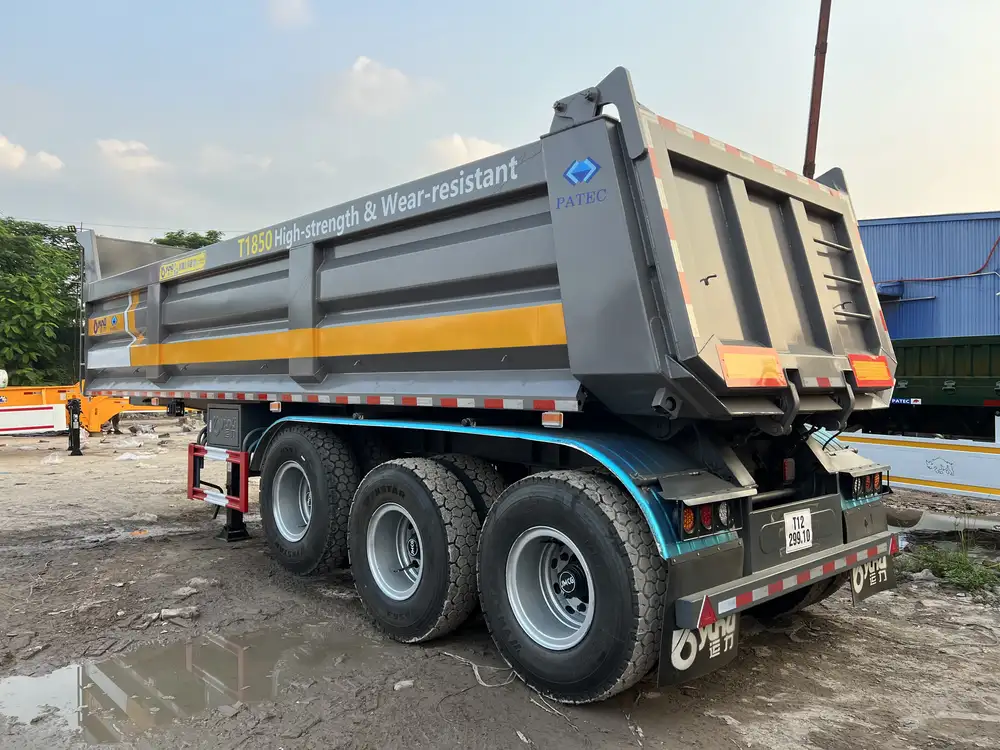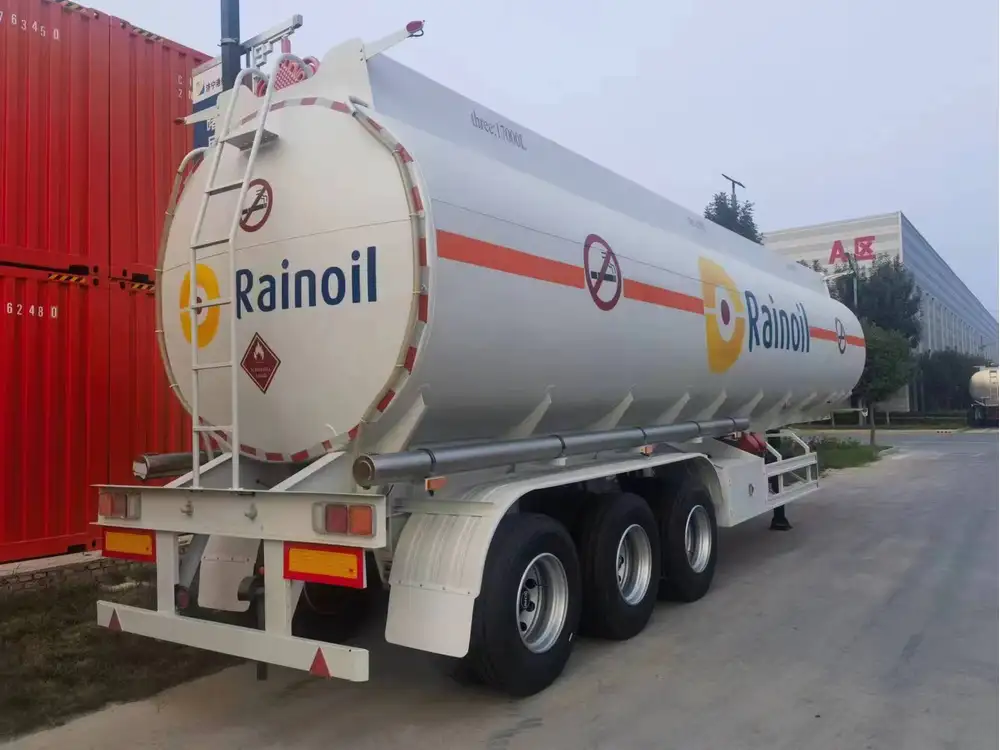Introduction to Tractor Trailer Heights
In the world of logistics and transportation, understanding the dimensions of vehicles is crucial. Among these, the height of a tractor trailer plays a significant role not only in determining its load capacity but also in adhering to essential road regulations. As we delve into this topic, it’s essential to clarify that “tractor trailer” typically refers to a combination of a tractor (the front part that houses the engine and driver) and a trailer (the part that carries the freight).
Standard Height of a Tractor Trailer
The height of a tractor trailer is typically dictated by a few key factors: design specifications, regulatory compliance, and load distribution. Standard semi-trailer heights average around 13 feet 6 inches (approximately 4.1 meters) to ensure compatibility with most roadways in North America. This height accommodates standard shipping containers and freight while remaining within legal limits to avoid height-related issues, such as bridge clearance.
| Type | Average Height |
|---|---|
| Standard Semi-Trailer | 13 feet 6 inches (4.1 m) |
| Low-Profile Trailers | 13 feet (4.0 m) |
| High-Cube Trailers | 13 feet 6 inches (4.1 m) |
| Flatbed Trailers | 13 feet 6 inches (4.1 m) |
| Specialized Trailers | Varies |

Factors Influencing Tractor Trailer Height
Understanding why height regulations are set requires a look into the multi-faceted matrix of variables affecting tractor trailer dimensions.
1. Regulatory Standards
- Federal Regulations: In the U.S., the Federal Highway Administration (FHWA) mandates that no vehicle exceed a height of 13 feet 6 inches unless specific permits have been acquired. This ensures safety on public roads and thoroughfares.
- State Variations: While federal guidelines serve as a baseline, individual states may have their specific regulations. For instance, some states may impose stricter height limitations crossing state lines or through particular routes.
2. Infrastructure Considerations
- Bridge Clearances: Infrastructure elements, such as bridges and overpasses, are designed with height limits in mind. Violation of these limits can lead to severe accidents and infrastructure damage.
- Road Maintenance: Maintaining clear road space for high vehicles ensures public safety and optimizes operational efficiencies for transport companies.

3. Vehicle Design and Cargo
- Trailer Types: Different types of trailers, including reefer trailers, flatbeds, and car haulers, may differ slightly in overall height based on their intended function and necessary clearances.
- Cargo Configurations: Load height also depends on how the cargo is arranged within the trailer. Too high a cargo load can lead to a violation of height regulations, putting both the cargo and vehicle at risk.
4. Equipment Variance
Specific enhancements or modifications, like the inclusion of hydraulic lifts for easier loading and unloading, can add to the total height of the trailer.
Common Misconceptions About Tractor Trailer Height

1. “All Tractor Trailers Are the Same Height”
This broad assumption overlooks the variation in vehicle types and their specific functions. For instance, low-profile trailers are designed for cargo that requires lower clearances and thus are typically less than the standard height.
2. “Height Restrictions Are Uniform Everywhere”
Traveling across states can reveal a surprising array of regulations concerning vehicle height. Transporting goods from one state to another can call for research into the unique regulations applicable on each route.
3. “Weight and Height Are Independent Factors”
While cargo weight does not directly dictate height, it impacts how low or high a load can be stacked. The interplay of weight distribution significantly affects a vehicle’s center of gravity, which can ultimately influence height regulations during load arrangements.

Calculating the Potential Height of Your Load
When preparing shipments, understanding how to calculate total height is essential.
Step 1: Measure the Trailer Height
Start with the standard height of 13 feet 6 inches for most trailers.
Step 2: Determine the Height of Your Cargo
When measuring your cargo, ensure to account for the tallest item being loaded. For example, if you have crates that are 3 feet tall and stack five high, that adds an additional 15 feet to the total height.

Step 3: Add Additional Equipment
Incorporate height from any additional equipment such as straps or tarps that may alter the height of the load.
Step 4: Adjust for Weight Distribution
Properly distribute the weight on the trailer to maintain vehicle balance. An uneven load can heighten the risk of tipping, which is critical to safety.
Real-World Examples of Height Regulations
Understanding jurisdiction variations can be illustrated through two contrasting scenarios: one in California and another in Texas.

Case Study: California
- Maximum Height: 13 feet 6 inches (similar to federal regulations)
- Special Permits Required: Higher loads may need special permits, processing time can take up to two weeks depending on the requested height.
Case Study: Texas
- Maximum Height: 14 feet when using highways designated for bigger loads.
- Permit Procedures: A simplified permit process allows for faster travel between state lines.
Importance of Compliance with Height Regulations
Non-compliance with height requirements can lead to severe consequences, including:
- Fines and Penalties: Unauthorized height violations can result in steep financial penalties.
- Safety Hazards: Over-height vehicles increase the risk of collisions with infrastructure and unintended hazards.
- Operational Delays: Vehicles stuck under bridges or in restricted areas can lead to significant delays and lost revenue.

Tips for Staying Within Safe Height Limits
Adhere to the following best practices when transporting goods:
- Pre-trip Inspections: Routinely check the height of your loaded trailer.
- Know Your Routes: Familiarize yourself with the routes you plan to take and their specific restrictions.
- Use Height Measurement Tools: Invest in accurate measuring tools to ensure compliance before hitting the road.
- Consult State Regulations: Make use of state and federal resources for up-to-date regulations to avoid miscalculations.
- Training and Awareness: Ensure that all drivers are well-versed in height regulations and their implications.
Conclusion
Understanding the complexities surrounding the height of a tractor trailer is imperative for compliance, safety, and operational efficiency. Navigating the intricate web of federal and state regulations, coupled with the physical limitations of vehicle design and cargo, can help fleet operators avert potential pitfalls. By remaining informed, conducting due diligence in planning, and adhering to industry best practices, one can ensure a streamlined and lawful transport operation.
The nuances discussed here not only provide a thorough understanding of tractor trailer heights but serve as a crucial resource for logistics professionals seeking to optimize their operations while ensuring adherence to safety standards. In a constantly evolving transport landscape, knowledge is indeed power—empowering businesses to efficiently and safely navigate the logistics maze that is part and parcel of the transport industry.



